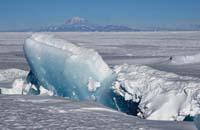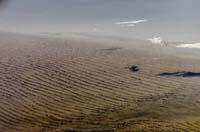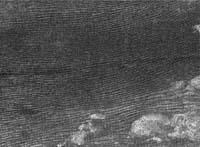Through the desert
2006/06/01 Kortabitarte Egiguren, Irati - Elhuyar Zientzia Iturria: Elhuyar aldizkaria
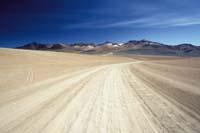
They are land without sowing and with little vegetation in general. They are mostly sandy, but the rocky or rocky soil is also quite frequent. Likewise, the hills, that is, the dunes, which are formed by accumulation of sand transported by the wind are very common in the deserts.
The wind blows constantly in the deserts, sometimes very violent. The small grains of sand that act against the rocks by action of the wind have a great capacity of erosion. This wind process is an important factor in the configuration of the desert landscape.
On the other hand, in the deserts can spend years without raining and then, suddenly, throw big basques. That is, it rains little, but when it does it emits much water in a short time and floods occur. It surprises the amount of remains that the water leaves in such a arid place. Canyons, ravines, deltas, meandros, etc. They are more remarkable in the deserts. As a result, erosion is very high, mainly due to water and wind.
The second factor to mention when talking about deserts, as important as rain, is temperature. In fact, although we often relate deserts to heat, some deserts are very cold. Anyway, here we will only talk about calors.
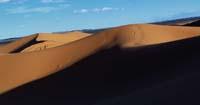
Type of desert
There are several ways to classify deserts. Imagine yourself almost like the deserts in the world. Deserts can be classified according to the amount of rain, temperature, humidity, etc. that it carries out annually in these zones. In 1953 US researcher Peveril Meigs classified the desert areas of the Earth into three categories according to the amount of rain it produced in these areas. Extremely dry, dry and semi-dry areas.
In the first, for 12 months it does not make any drop of rain. Dry areas are those that receive less than 250 mm of rain per year. In semi-dry areas it rains between 250 and 500 mm per year. The first two are true deserts. The latter, on the other hand, are often called semi-deserts, also known as steppes. To make an idea, on the Atlantic side, average annual rainfall is 1,200-2,000 mm.
In general, deserts are classified according to their geographical situation and the predominant time.
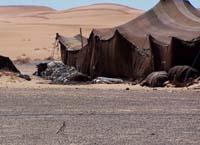
In the harshest areas of these deserts hardly rains, at most every several years. As the sky is always blue and the sea is far away, the temperature can vary a lot. The hottest days are generally given in these places, but in the evening the temperature can be considerably lowered and the opera often arrives.
Other deserts are located on the western coasts of the tropical regions. In these regions, trade winds also predominate, which cause the hot water from the surface of the sea to move away from the coast and the cold waters emerge from the bottom. These deserts are cooler than the previous ones and with abundant fog. However, as the sea is very cold, the air passes little water vapor and the coastal mists leave very little rain on land, since as the wind penetrates the continent it dries. One of the most arid deserts is the Atacama of Chile. Imagine that there can pass 5, 20 or 400 years without more than 1 mm of rain.
Besides the previous ones, there are several deserts in medium latitudes, originated simply by the remoteness of the sea. Gobi can be the best known example. In them, the largest thermal oscillations are produced throughout the year. From the Sonoran desert in southwest North America or the Tenggger desert in China. In the case of Gobi, rainfall is not so small, but occurs mainly in winter, when the plants are too cold, and in summer there is usually severe drought.
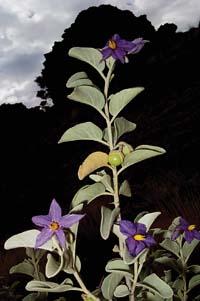
Not all deserts are the same, with significant differences in quantity of water and temperature. Life in the deserts also depends on the type of desert. Cold deserts or large ice areas are almost inactive, for example.
Deserts are not dead places
Although they appear to be inexhaustible spaces, the ecology of deserts has special interest. And it is that in them we see better than anywhere how the lack of a basic resource to live, the scarcity of water is faced.
To face the hard life in the deserts, plants and animals have had to develop a strategic life. In the deserts you can find a multitude of surprising techniques to make the most of the water and avoid heat.
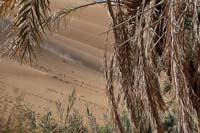
In addition, to absorb the carbon dioxide necessary for photosynthesis, some plants only open the stomach at night when the water loss is lower. The roots are also adapted to aridity. They are very widespread to absorb the maximum water during the rain and are shallow. The best known plant adapted to this situation is cactus.
Another anti-lasting strategy is the development of long and deep roots. The pumpkin that appears in the sandy deserts, for example, has roots of 40 meters in length. There are also plants that combine several strategies. For example, the plant called Larrea tridentata has two types of deep and superficial roots to absorb water from every corner.
Some plants prefer to run away rather than resist thawing. In times of prolonged drought, waiting for rain, they fall asleep and hide. After each rain, they grow and bloom. During this period, its main task is the dispersion of the seeds so that the species can be maintained.
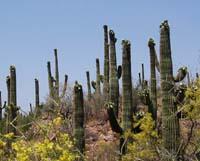
And the animals?
Aridity is hard for the entire desert population, but in general, animals have more problems than plants. However, unlike plants, animals can move and, of course, that's a great advantage.
Larger animals, such as camels and elephants, in search of water and shade, walk oasis and puddles, but for smaller animals it is impossible to walk like this. Therefore, many snakes, rodents and mammals have become nocturnal to combat heat. During the day they hide in caves and shelters until the enjoyment of the temperature. The birds, on the other hand, cannot do so and use another technique to refresh a little. They are placed looking at the sky, open the mouth and spy, and then fly over the evaporated water to recover the water that evaporates.
On the other hand, many desert animals, to absorb less heat and to make predators not so easy, have taken the color of the substrate. But there are also dark animals like the black vulture. This vulture uses urine to reduce the heat it absorbs. Make the urine on the leg and get the blood that is dispersed throughout the body to cool.
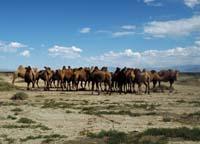
Animals can't absorb water like plants, and most get it from food, insects make it from plants and birds and reptiles from insects. However, the water they achieve thus is not always sufficient for all animals and have developed many special techniques. For example, some mammals cover the hole that passes the day to maintain the humidity that comes from the airways and recover it through specialized organs. Some reptiles, thanks to special tubes they have in the kidneys, recover part of the water from the urine and redirect it to the blood.
Desert and people
The desert is undoubtedly one of the hardest means to live, both for plants, animals and for human beings. However, the desert has long since become the home of human beings. In Kalaharin, in the inner desert of Australia and in the deserts of the west and southwest of the United States are hunters and fruit collectors. Although the desert is such a barren place that it allows them to survive, the main problem is the shortage of water, which moves continuously from one well to another.

In addition to the aforementioned villages, perhaps the most significant images are those of nomadic farmers and traders from Sahara, Arabia or Gobi. These villages (tuaregs, bedouins and mongols) move through the desert with their heads of cattle in search of meadows affected by the scarce rains. Thanks to these movements, these villages have become traders.
However, their lifestyle could not be adapted without the relationship with farmers living in oasis and river margins. These farmers are located in the place where the water appears and, through irrigation techniques, they are able to create a basic agriculture.
In addition to the traditional way of life, tourism is currently gaining strength in the deserts. Thousands of tourists come every year to enjoy the charm of these arid landscapes. The inhabitants of the deserts take advantage of this transit of people to earn a living.
As elsewhere, in the desert, human influence is perceived. Thus, in Egypt, in Mesopotamia (present-day Iraq and Syria), in Pakistan, in Peru, and let's not say, in many oasis, using irrigation techniques, have turned the desert into fertile land.
On the contrary, irrigation and inappropriate agricultural techniques have turned some places into deserts. Deserts are very interesting places, but, according to the United Nations, their overextension is one of the most serious ecological catastrophes taking place in the world.
